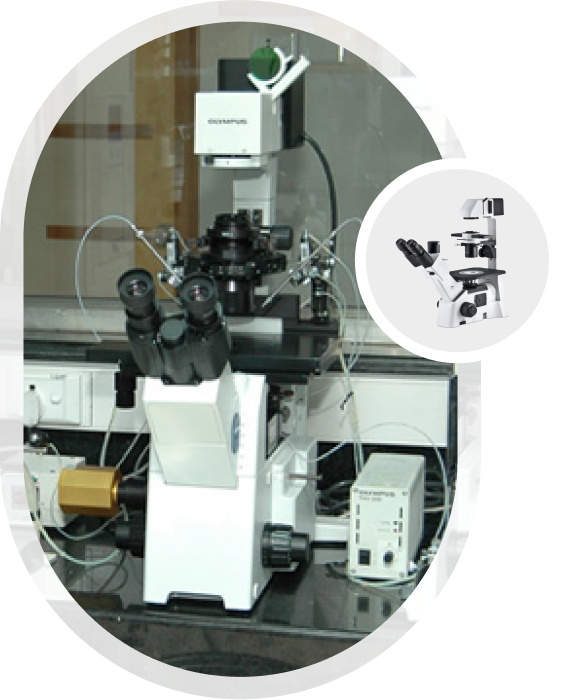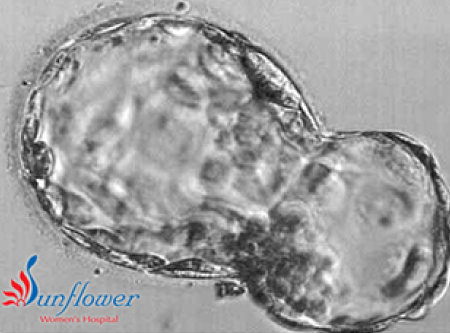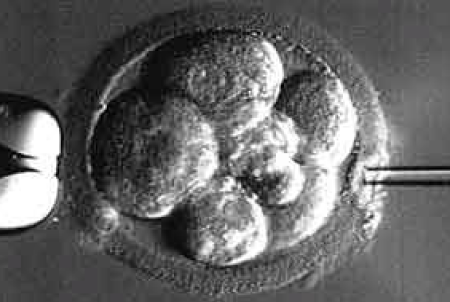Assisted Hatching
One of the most frustrating aspects of assisted reproductive technology for patients and fertility professionals alike is having to deal with failure. This is especially true in couples who have attempted assisted reproductive procedures many times, and also in those whose time is running out because of their age. Now, a recently developed technique, assisted hatching, is offering new hope to couples who fall into these categories.
Assisted hatching was developed from the observation that embryos which had a thin zona pellucida (shell) had a higher rate of implantation during in vitro fertilization. It was postulated that creating a minor defect in the zona might result in a greater chance of the embryo “hatching,” or shedding its shell, allowing for a better chance of implantation in the endometrium.

sunflower success numbers
1500+
IVF and ICSI procedures a year.
21000+
Live births by IVF and ICSI technology.
Life member
AOGS, AICOG, FOGSI, ISAR, ESHRE, ASRM, IFFS, IMA.
Success rate
70% to 76% in IVF ART.

There is a small risk of damage to the embryo during the micromanipulation process or at the time of transfer, and there is a slight increase in identical twinning . There is a greater chance of fetal complications and abnormalities in some identical twins.
Assisted hatching not only improves the success rate of the patients with the poorest chance of pregnancy because of their age, previous failure or elevated FSH level, but it can also make these “poor prognosis” patients almost as likely to succeed as any patient going through in vitro fertilization.
Assisted hatching is most effective through age 42. We feel that patients over age 42 would be better served by egg donation if they are willing to accept the concept. It is important to remember that these observations are preliminary and made on the basis of a small number of cases and we will need the confirmation of our and other’s ongoing experience.
LASER Assisted Hatching (LAH)

Diode laser is very effective in certain ART procedures like sperm immobilization, zona thinning, zona drilling, assisted hatching, polar body and blastomere biopsy for Pre-Implantation Genetic Screening (PGS) & Pre-Implantation Genetic Diagnosis (PGD), fragment removal etc.
Holding pipette on left, hatching needle on right As the shell (or zona pellucida) around the embryo is dissolved, the needle is advanced to the left until a small opening is made
The most commonly used indications for assisted hatching with an in vitro fertilization case are
- Age factor – Couples having IVF with the female partner’s age over 37
- Egg quantity and quality factor – Couples in which the female’s day 3 follicle stimulating hormone (FSH) level is elevated
- Embryo quality factor – Couples having IVF with poor quality embryos (excessive fragmentation or slow rates of cell division)
- Zona factor – Couples having IVF with embryos that have a thick outer shell (zona pellucida)
- failures – Couples having IVF that have had one or more previous IVF cycles that failed.
any couples elect to pursue assisted hatching during their IVF procedures. This is because the technique is associated with a number of benefits including
fewer embryos required for transfer
- increased implantation success rates
- allows for blastocyst culture
- Unfortunately, assisted hatching does have its drawbacks. Specifically, assisted hatching is only suitable for certain groups of women
- very difficult to perform and requires immense skills
- can be associated with an increased risk of monozygotic twinning
Assisted hatching is associated with a fairly high success rate, especially when performed by a skilled micromanipulator. In fact, pregnancy rates are as high as 49% in women who are between the ages of 35 and 39. Women who are over the age of 40 generally have lower success rates, but assisted hatching still provides them with a better opportunity for conception than would IVF performed without the procedure.

